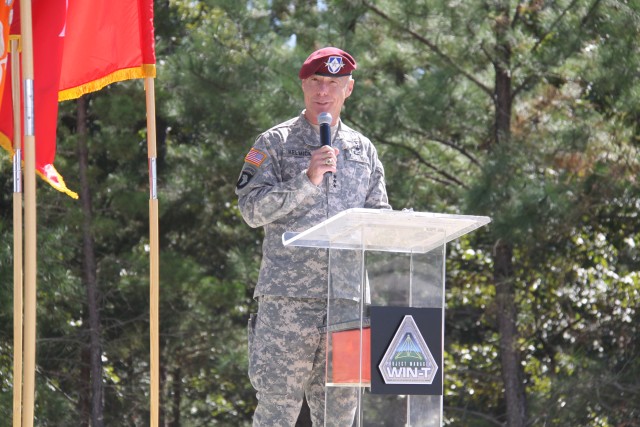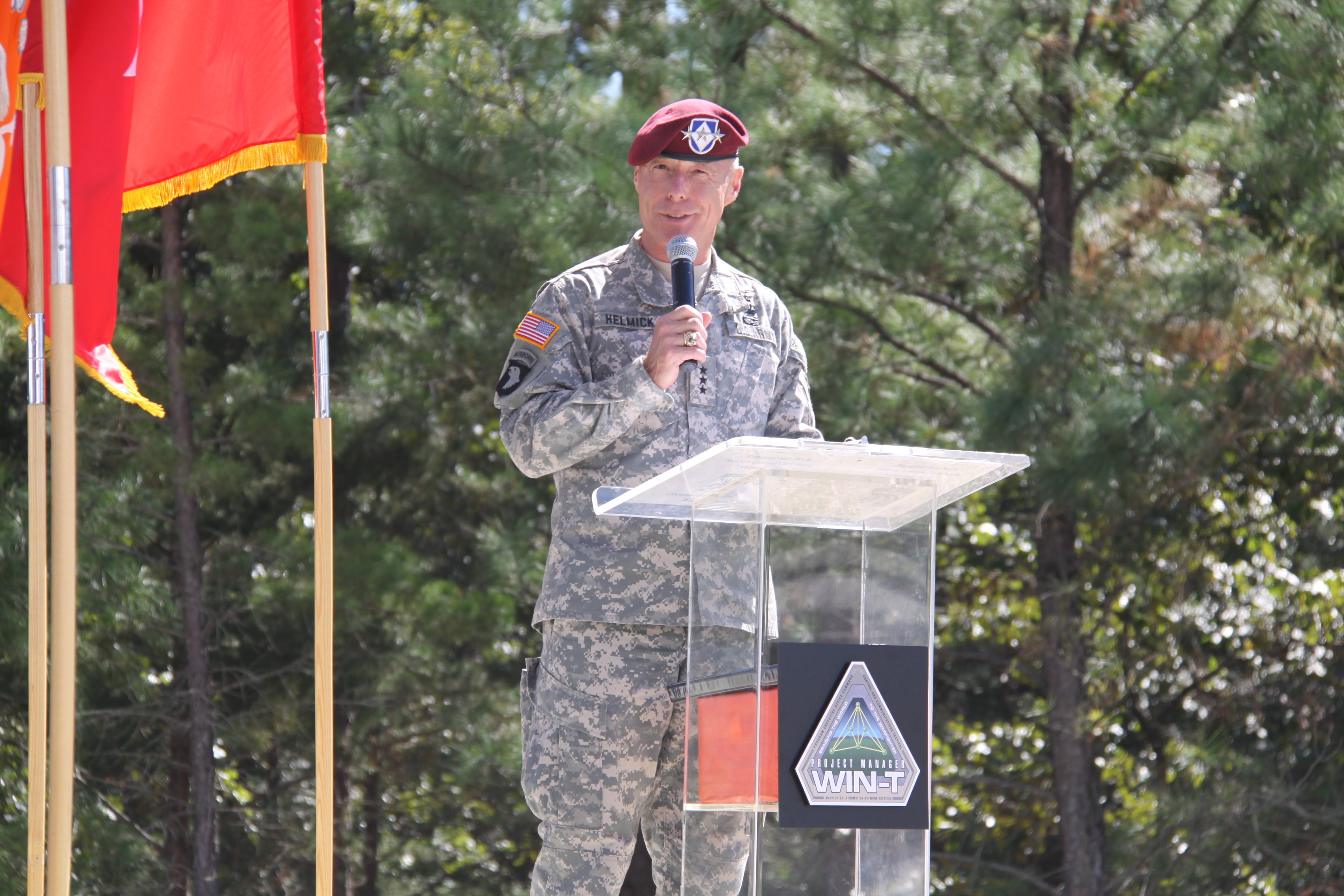Members of the Signal and Acquisition communities converged recently to mark the successful completion of the first Regional Hub Node (RHN) in the continental United States.
"Today marks a milestone of continuing progress towards realizing the vision of LandWarNet," said Brig. Gen. LaWarren Patterson, 7th Signal Brigade Commander, during the ribbon cutting ceremony held on Oct. 7 in Ft. Bragg, N.C. "This facility is a tangible piece of the network that we can see, touch, and operate in support of the Army's mission."
"Regional Hub Nodes are an integral part of the LandWarNet," Patterson said.
"They serve as a gateway to quickly connect expeditionary forces and their tactical IT (information technology) systems into the enterprise network, giving them access to the network as soon as boots hit the ground," he said.
The RHN will link Fort Bragg to the satellite communications capabilities required to complete a wide range of missions by allowing Warfighters to access tactical data from theater prior to deployment - meaning they can train as they fight.
"The RHN here at Bragg is also a key addition to the 7th Signal Command's mission of providing and defending network capabilities in the western hemisphere," Patterson said.
Each of the RHNs are strategically located to support global coverage with Fort Bragg representing the third of a five hub configuration. While this is the first one based in the United States, the Army already has operational RHNs in Camp Arifjan, Kuwait, and Landstuhl, Germany. In just over three years, the RHNs at Camp Arifjan and Landstuhl have more than 250 training, enduring real world and combat missions to their credit.
"This site supports more than just the Army," said Brig. Gen. N. Lee S. Price, Program Executive Officer for Command, Control, and Communications Tactical (PEO C3T). "It supports all of Department of Defense (DoD) and each of the forward forces, as well."
In Fiscal Year 2011, the Army will follow this one with Regional Hub Nodes in Camp Roberts, California and the Western Pacific area of Guam. Through these five RHNs, the Warfighter will have secure, reliable connectivity from the Middle East to the Continental United States and beyond to areas such as the Pacific region. With reach back to these strategic locations, Warfighters can complete expeditionary missions in austere environments where communications infrastructure is often non-existent prior to their arrival. From a division-sized task force to a very small specialized operation, the RHNs are ready to support Warfighters around-the-clock.
"Those three dishes and all of the baseband equipment inside can handle every bit of three divisions, plus an entire separates [enclave], which could be a separate brigade," said Col. William C. Hoppe, Project Manager for Warfighter Information Network Tactical (PM WIN-T). "That's an awful lot of combat power in the down range environment that now has the ability to land on just one hub, and we're going to put five of them in."
The Regional Hub Nodes on the east and west coasts of the United States will eliminate many challenges faced during natural disasters such as Hurricane Katrina. If a hurricane were to knock out cell phone towers and other communications like it did in the Gulf Coast in August 2005, the RHN would be ready miles away from the destruction to keep initial deployers in the relief efforts connected to the voice, video and data communications capabilities they need to achieve their missions.
The team's government members come from PM WIN-T, Defense Communications and Army Transmission Systems(PM DCATS), Information Systems Engineering Command (ISEC) and 7th & 9th Signal Commands of Network Enterprise Technology Command (NETCOM). The effort was also supported by General Dynamics, C4 Systems, and the General Dynamics Satellite Communications (SATCOM) Division. All who were involved demonstrated meticulous attention to detail.
First, they surveyed the site to ensure it was appropriate for this equipment. To meet Garrison requirements they broke ground, tapped into on site power, and installed an adequate cooling system. They installed the Regional Hub Node's 49 racks of mostly commercial off-the-shelf satellite communications equipment and three satellite dish terminals. After completing system level and end-to-end testing of its baseband components and satellite gear, the team installed, tested, and trained the RHN in Fort Bragg in less than one year beginning with the site survey in October 2009. These efforts are critical in the mission to provide deployed and deploying forces with the mobile and fixed communications capabilities they require to prepare, train, and fight the Global War on Terror.
"From a PM standpoint, you have got to check those three blocks: cost efficiency, schedule, and performance," Hoppe said. "Not only did we bring it in on time, we also brought it in under cost so we were able to take some of that cost [savings] and put some additional capabilities out here for the [18th Airborne] Corps."
Being able to maintain situational awareness and evaluate command and control while on-the-move is critical to commanders at all echelons, said Lt. Gen. Frank G. Helmick, Commanding General of the 18th Airborne Corps.
"It's key, so this Regional Hub Node and the people who run it represent a significant leap ahead really in the capabilities that we have in the 18th Airborne Corps and Ft. Bragg.," he said.


Social Sharing